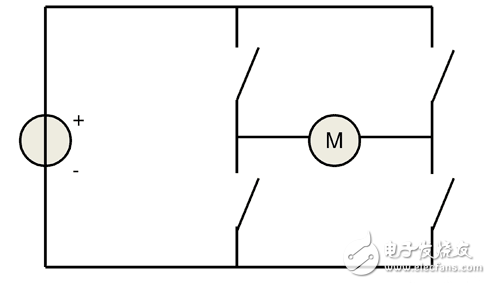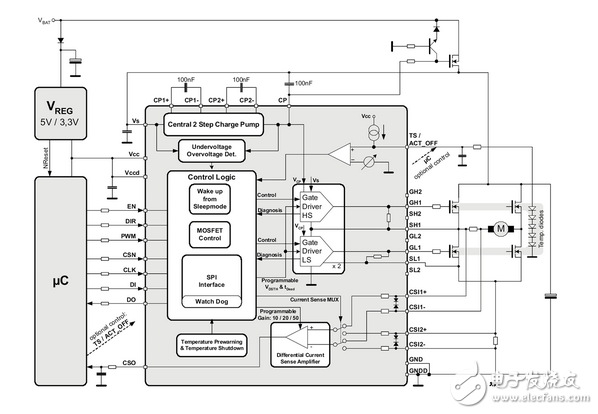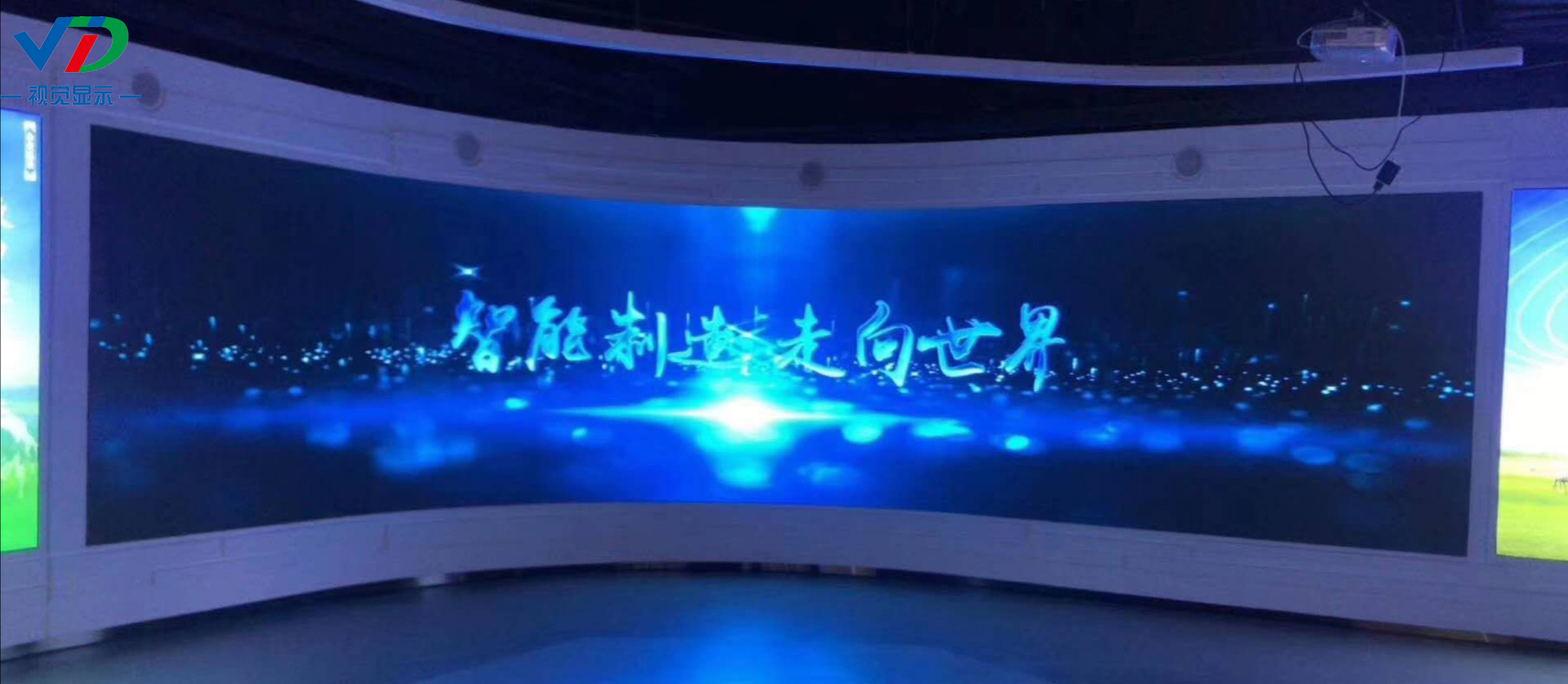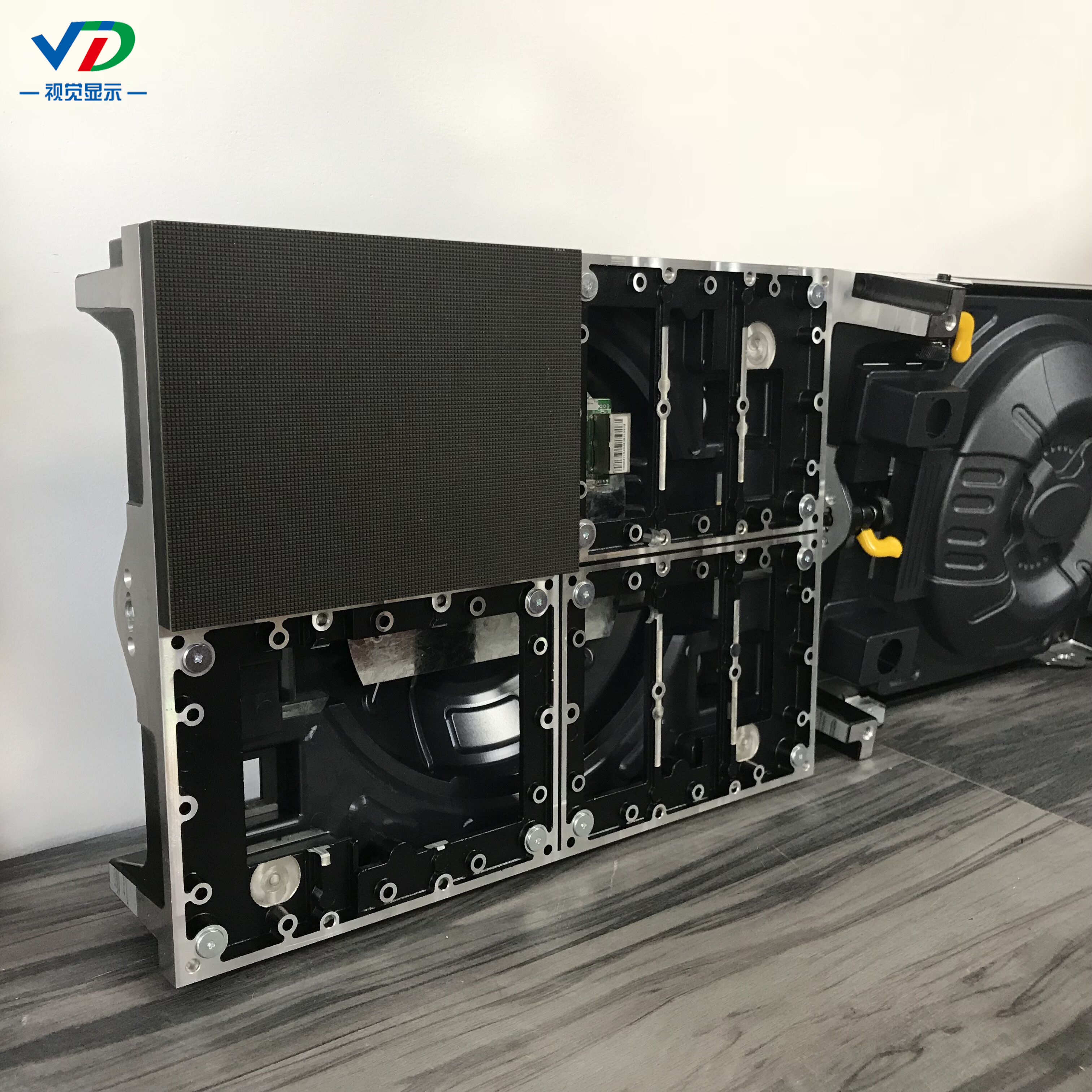DC motors are common in automotive applications and are used in a wide variety of automotive systems, including doors, mirrors, seats and electric pumps. The simple structure and low cost make it the solution of choice for automotive system designers. A DC motor has three main components: a stator that generates a magnetic field, a rotor that carries a motor coil, and a brush that transmits current to the coil. When the power supply is connected to the two terminals of the motor, current will flow to the rotor coil. If the current on the coil is strong enough to cause torque to the motor and load, the motor will rotate. Motors typically use PWM technology to control speed and torque. In addition, if the direction of motor rotation must change in practical applications, the supply voltage on both terminals of the motor must be changed. Based on these requirements, an H-bridge with four switches that connect the supply voltage to the two terminals of the motor as required is a typical two-way DC motor control solution. Figure 1: H-bridge configuration. ST's L99H01 is an automotive motor driver chip that integrates four gate drivers to control the four external N-channel MOSFETs in the H-bridge. The structure is simple and the drive is flexible, making it suitable for a variety of automotive systems. Through the internal SPI interface of the driver, the external microcontroller can read the diagnostic information, and can also set multiple functions of the driver to meet the actual application requirements. The drive has a two-stage charge pump built in, which has several benefits. The H-bridge external MOSFET is driven at a lower input voltage, saving as much external components as possible (three capacitors only) and driving the motor at 100% duty cycle. In addition, the output voltage of the charge pump can also be used to drive an additional MOSFET tube of the battery polarity reverse protection circuit. Since the motor generates an inductive load in the drive circuit, in order to minimize the dissipated power, a correct closed loop must be designed for the motor current when applying the PWM control technique. The L99H01 gives designers the flexibility to choose a freewheeling loop strategy. In addition, by properly selecting the freewheeling circuit, coupled with an external microcontroller, the driver can perform functional safety tests in real-world applications. Figure 3: L99H01 freewheeling method selection The current through the H-bridge can be measured by using one or two current sense amplifiers (CSA) inside the L99H01. These amplifiers have a lot of special places. Because the amplifier input accepts high voltages, current can be measured at ground, power lines, or direct series motors, allowing users to meet different needs and strategic requirements. In addition, the gain of the amplifier can be set via the SPI serial port for greater flexibility in application development. In addition, offset correction can be performed on the amplifier to reduce the negative impact of the amplifier's own offset on the current measurement. The internal watchdog timer monitors the external microcontroller to improve application-level security. In case the watchdog finds that the microcontroller is abnormal, the L99H01 disables the internal MOSFET gate driver. The L99H01 protects against intrusive drives and systems against potentially hazardous events. The product features undervoltage protection and overvoltage protection (via SPI). If these events are found on the power supply, the gate driver will be disabled and reported to the microcontroller via the SPI interface. If the motor's terminal is accidentally shorted to ground or shorted to the power supply, the L99H01 monitors the drain-to-source voltage of each activated transistor on the bridge to protect the external MOSFET. If the drain-source voltage is above the preset threshold and the duration is greater than the internal filter time, the driver turns off the affected transistor and reports the event through the SPI serial port. The user can adjust the voltage detection threshold according to the actual application (ie, the MOSFET resistance and the current flowing through the bridge), and select one of the four values ​​as the threshold through the SPI interface. When the high- and low-side MOSFETs in the same half-bridge are commutated, it is important to introduce dead time between the turn-off of one transistor and the turn-on of the other transistor. Otherwise, the two transistors may be turned on at the same time, causing the flow from the power supply to the ground. The countercurrent. Users can select multiple thresholds according to actual needs through the SPI interface. When switching transistors on the same leg, the L99H01 automatically enables the settable dead time. As an in-depth protection mechanism, the L99H01 detects internal and external thermal events and responds accordingly. This product detects the initial state of internal overheating and alerts the external microcontroller via the SPI interface. In this way, the microcontroller can take some countermeasures to reduce the temperature of the drive itself and the system. If the internal temperature of the chip rises further, the chip enters the thermal shutdown mode, disabling the gate driver and the charge pump. In addition, an external temperature sensor (such as a light bar) can be connected to the dedicated input of the L99H01. When the voltage on this pin falls below the threshold, the driver turns off the gate driver to protect the bridge. Depending on the characteristics of the current application design, the user can select the threshold pressure via SPI. It is worth mentioning that this input can be used to disable the gate driver when an external digital signal is applied. The L99H01 is available in two economical packages, the PowerSSO36 (heat sink exposed) and the LQFP32 (all plastic package).
Small Pitch LED Display is also called HD Led Display Screen. In recent years, the wide application of Led Display screen in all walks of life has led to the centralized outbreak of "small spacing", especially in places where the display requirements, screen precision and density requirements are relatively high, such as police command system, monitoring and security system, high-end conference system, advertising information release, etc.
Small pitch LED display is so popular, mainly because it has the following outstanding characteristics:
1.Cabinet thickness of the box <40mm;
2.Cabinet power no cascade output, lower risk of connection defectives;
3.Secondary class power supply design, low voltage power supply inside cabinet,high efficient module power,
low heat radiation;
4.The module apply magnesium alloy die-casting bottom base, good flatness, the bottom base dings;
5.Module intelligent detection and data;
6.Board-to-board professional connector for module and HUB, the performance is more reliable;
7.Control card and power supply using dual backup design, it can be applied to a variety of high demand places;
8.Concealed HDMI connection for signal more stable performance and cleaver joint;
9.Front and after maintenance for control cards;
10.High gray level, high refresh, high contrast, low brightness design.
Small Pitch LED Display Small Pixel Pitch LED Display,Professional Led Manufacturer,HD LED Screen Shenzhen Vision Display Technology Co,.LTD , https://www.ledvdi.com

Figure 2: L99H01 block diagram and application diagram 

